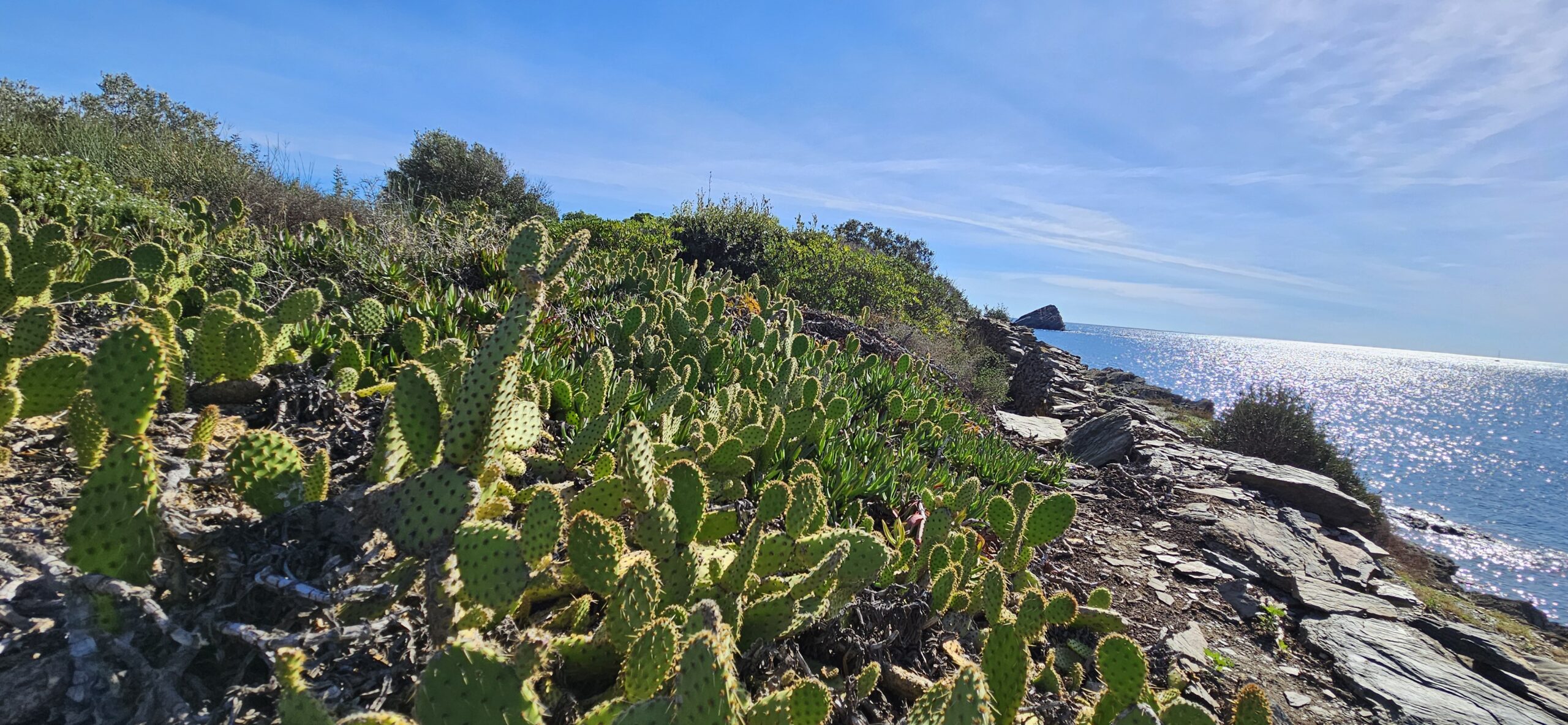
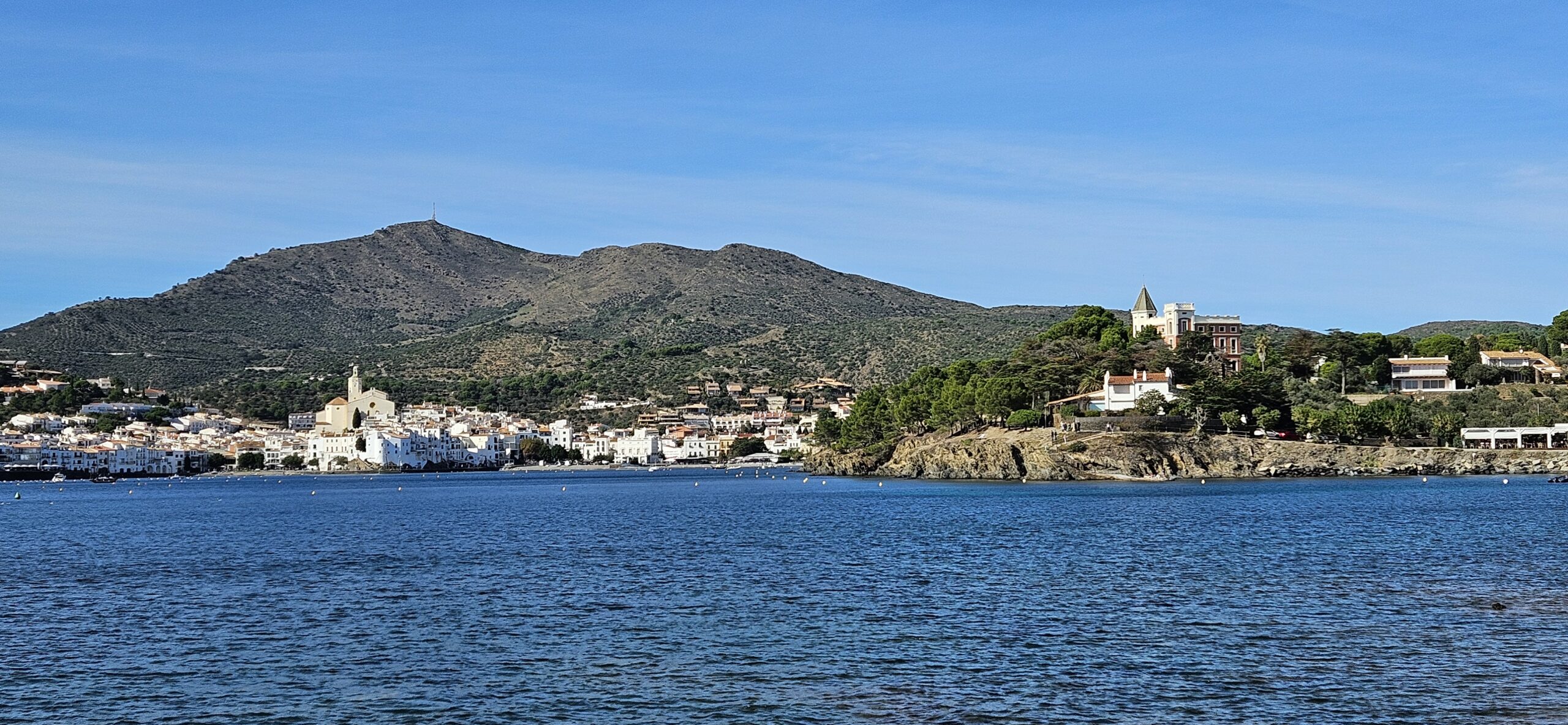
Cadaqués Bay from the east.
Last Sunday 20th October, our LIFE team went on a botanical field trip, open to everybody, to observe and show the Cadaqués flora. We started with a brief explanation of the main objectives of the project, the different aspects of the LIFE medCLIFFS and the role of the volunteers and their development. We handed them support material to help them identify the allochthonous plants, monitored in the project, that we would find along the way. Meanwhile, the participants started downloading the iNaturalist app and creating profiles so they could learn to make observations. So then, we started from the transect N19, on the east coast of Cadaqués Bay. We stopped to see the first plant growing out of the wall in front of the water. There were several plants of tree tobacco (Nicotiana glauca) that we used as an example of an allochthonous plant. On this matter, we also deepened a bit and talked about the different degrees of naturalization (as in “how well-established a species is”) going from occasional and spontaneous to naturalized and this latter may become invasive.
After that, we followed the way and came across a big Malephora sp. Population covering almost the entire top of the cliff. Here, we explained what a population is and how we consider whether it is one or more. Right next to it was a population of tree mallows (Malva arborea) and a participant asked if it was an invasive species. At this point, we answered that this one was autochthonous, but as there were many individuals of one species only, it could have an invasive character resemblance, especially after seeing the two previous species.
 Tree mallow (Malva arborea) population at the beginning of the route.
Tree mallow (Malva arborea) population at the beginning of the route.
Next to the road, we could see different private properties with gardens and allochthonous plants in them such as a bougainvillea (Bougainvillea spectabilis) and a cane cholla (Cylindropuntia imbricata) but these species did not pose a risk of invasion. However, next to them we could spot several century plants (Agave americana) growing all over the ground displaying their spreading capacity.

 Checkpoint in front of a private garden where several allochthonous plants cane cholla (Cylindropuntia imbricata) and century plants (Agave americana) could be seen.
Checkpoint in front of a private garden where several allochthonous plants cane cholla (Cylindropuntia imbricata) and century plants (Agave americana) could be seen.
Almost at Ses Oliveres Beach, we found more plants of Nicotiana glauca in bloom and some juveniles growing from the sand and rock cracks. At the beach, we stopped in front of a Mediterranean fan palm (Chamaerops humilis) an autochthonous species of the west Mediterranean that can also be bought at garden centres, as they not only sell allochthonous species. However, it is currently studied whether all the observations of Chamaerops humilis from the north of the Costa Brava are indigenous or come from French populations. Back on the path, close to the wall, we stopped to show a population of Lantana × strigocamara, a plant commonly planted in gardens with Mediterranean climate in our country, especially near the coast and sometimes together with one of the parents of this hybrid species, the common lantana (Lantana camara).
 Path to Ses Oliveres Beach where there was a population of tree tobacco (Nicotiana glauca) at the rocky part and a Mediterranean fan palm (Chamaerops humilis) population closer to the sand.
Path to Ses Oliveres Beach where there was a population of tree tobacco (Nicotiana glauca) at the rocky part and a Mediterranean fan palm (Chamaerops humilis) population closer to the sand.
 Detailed view of flowers and leaves of tree tobacco (Nicotiana glauca).
Detailed view of flowers and leaves of tree tobacco (Nicotiana glauca).


Lantana × strigocamara population and details of its flowers, leaves and unripe fruits.
Whenever we found autochthonous species of Mediterranean cliffs we stopped to show them to the participants so they could see and learn about the native flora of the region. At this top we saw sea fennel (Crithmum maritimum), a plant that grows strictly in rock crevices close to the sea. There was also a population of sea-lavenders (Limonium sp.) well-sheltered by the wall, that were still in bloom and several dry and new plants of wild Spanish carrot (Daucus carota subsp. hispanicus).


Sea fennel plants (Crithmum maritimum) in bloom and fruiting [left] and an inflorescence of a wild Spanish carrot (Daucus carota subsp. hispanicus) [right].


Purple flowers and mucronated leaves of a Limonium geronense.
Right before arriving at Ros Beach, there was a single plant of canary palm tree (), a very common plant found along the coast, and very integrated in the coastal landscape, but still not native to this region. Next to it was an isolated population of white gaura (Oenothera lindheimeri) which could have been planted deliberately or had escaped from one of the gardens close by. It was an interesting stop as this species is introduced yet not often found in the wild there.
 Flower of a white gaura (Oenothera lindheimeri)
Flower of a white gaura (Oenothera lindheimeri)
At the beach, we kept finding autochthonous plants that usually go unnoticed for their size or inconspicuous flowers. The first one was a white henbane (Hyoscyamus albus) growing out of the wall and amidst the sand. Many of the participants were surprised when they knew this plant was from the same family as tomatoes and tobacco, the Solanaceae, and that their fruit was a dry capsule, and their seeds spread by wind.


White henbane plant (Hyoscyamus albus) in bloom [left], and detailed view of its ripe fruits (capsule) [right].
A few meters away, there were several plants of a different family with less showy flowers, the Amaranthaceae. There was a big population of dried plants of saltbush or sea orache (Atriplex halimus), an edible plant whose taste is, as its name suggests, salty usually growing in locations with high salinity, and so in front of the sea. Near these bushes, we found a different species, from the same family, the white goosefoot (Chenopodium album). These are also edible, not salty and to help the participants remember, it is from the same genus as the quinoa (Chenopodium quinoa).


Dry plants of saltbush (Atriplex halimus) with new sprouts [left], and white goosefoot (Chenopodium album) [right], both from the same family. the Amaranthaceae.
At the base of the stairs following our way to the Pere Fet Beach, we stopped in front of one of the most common woody invasive alien plants we find in the Costa Brava, the Japanese cheeswood (Pittosporum tobira). Here we asked the volunteers to show how an iNaturalist observation is made and how to fill in the form fields. We highlighted the importance of proper identification and classification according to population size, extension, number of individuals and vegetative/reproductive stage; if there are flowers or fruits, if there is regeneration by noticing seedlings and young plants.
 A participant making an iNaturalist observation of a Japanese cheesewood population (Pittosporum tobira) and, at the same time, everyone was collaborating to fill in the form of an observation of a transect you get when you submit it to the Volunteers’ Network of the LIFE medCLIFFS project.
A participant making an iNaturalist observation of a Japanese cheesewood population (Pittosporum tobira) and, at the same time, everyone was collaborating to fill in the form of an observation of a transect you get when you submit it to the Volunteers’ Network of the LIFE medCLIFFS project.
On top of the stairs, we still found more native species that people did not recognize and we emphasized the importance of knowing both the autochthonous flora and the alien plants, for instance: the southern globethistle (Echinops ritro), an autochthonous thistle yet quite unknown to almost everyone, and the soap aloe (Aloe maculata) and the pale dewplant (Drosanthemum floribundum), two allochthonous plants but more common to them.
Between the bushes, we spotted several spontaneous tomato plants (Solanum lycopersicum) growing out of the pine needles. This was a clear case of an occasional allochthonous plant that was not naturalized.



Southern clobethistle (Echinops ritro) [left], pale dewplant (Drosanthemum floribundum) [centre] soap aloe (Aloe maculata) [right].


Participants in front of a zone with plant waste where several plants of soap aloe have established well enough to establish a population [left] and an adult Aloe maculata with a juvenile next to it [right].
 Young tomato plant (Solanum lycopersicum) opening its way among the pine needles, occasional observation.
Young tomato plant (Solanum lycopersicum) opening its way among the pine needles, occasional observation.
At the beach, on one side we talked about a plant that has extended throughout Europe, not only to the Costa Brava, and it is considered as very invasive, despite the different uses it had since ancient times, the giant reed (Arundo donax). In this particular case, the plant does not seem very threatening as there were just a few stalks among the lentisk bushes (Pistacia lentiscus). Nevertheless, everyone agreed to its invasive behaviour since when they grow, generally tend to cover great extensions and prevent other plants from growing. This is accentuated next to water bodies where they create thick barriers. Another invasive species planted in coastal gardens, for its similar climatic conditions, is the ngaio or mousehole tree (Myoporum laetum), a plant endemic to New Zealand.


A small giant reed (Arundo donax) population growing among lentisk bushes in front of the sea and the participants discussing about the invasiveness of this species.


Trees and detail of the leaves of a mousehole tree (Myoporum laetum) planted at the beach where some seeds spread beyond the wall and new plants have grown.
On our way to S’Arenella Beach, we stopped to take the group photo, as customary during the LIFE medCLIFFS field trips.
 Group photo of the participants with the LIFE medCLIFFS staff and volunteers.
Group photo of the participants with the LIFE medCLIFFS staff and volunteers.
Reaching the end of the trip we stopped next to a house where an enormous amount of allochthonous plants were growing and spreading out of the property boundaries. The participants clearly saw the direct impact the invasive plants have on the local flora. There was a mosaic landscape of Japanese cheesewood (Pittosporum tobira), sour fig (Carpobrotus sp.), prickly pear (Opuntia ficus-indica), and an extensive population of Opuntia pulverula that was directly affecting the local sea-lavender (Limonium sp.) population. The cacti were growing new pads and covering the basal rosettes of the sea lavenders (Limonium sp.) preventing any light from reaching their leaves.
 Mosaic of allochthonous plants escaped from the garden of a private property.
Mosaic of allochthonous plants escaped from the garden of a private property.
Limonium sp. population growing at the base of the wall, opposite Pere Fet Beach, affected by the growing Opuntia pulverula population. On the left, an adult Limonium sp. plant with last year’s inflorescences and a basal rosette still exposed to the sun, despite the presence of a few fallen Opuntia pads. On the right, is another Limonium plant, also with the remnant inflorescence of last year, but its basal rosette is covered by the Opuntia, preventing any sunlight from reaching the leaves. This is one of the major problems the Limonium populations have with invasive species.
 Lat stop of the field trip in front of the house with the mosaic garden of invasive plants.
Lat stop of the field trip in front of the house with the mosaic garden of invasive plants.
Here we finished our trip and we thanked all the participants for their enthusiasm and questions along the way to what they thanked the team back and as they were leaving delighted with the activity, the explanations and the whole project idea. Also, some requested more information on how to become volunteers for the project. We reminded the volunteers that on 16th November, at the Natural Sciences Museum of Barcelona (Museu de Ciències Naturals de Barcelona) at the Fòrum, there will be the LIFE medCLIFFS volunteers’ annual meeting.
Text and photographs: Edgard Mestre


 Tree mallow (Malva arborea) population at the beginning of the route.
Tree mallow (Malva arborea) population at the beginning of the route.
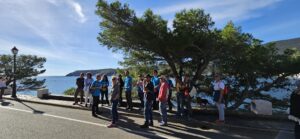 Checkpoint in front of a private garden where several allochthonous plants cane cholla (Cylindropuntia imbricata) and century plants (Agave americana) could be seen.
Checkpoint in front of a private garden where several allochthonous plants cane cholla (Cylindropuntia imbricata) and century plants (Agave americana) could be seen.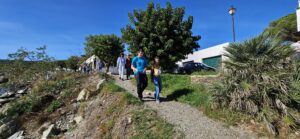 Path to Ses Oliveres Beach where there was a population of tree tobacco (Nicotiana glauca) at the rocky part and a Mediterranean fan palm (Chamaerops humilis) population closer to the sand.
Path to Ses Oliveres Beach where there was a population of tree tobacco (Nicotiana glauca) at the rocky part and a Mediterranean fan palm (Chamaerops humilis) population closer to the sand. Detailed view of flowers and leaves of tree tobacco (Nicotiana glauca).
Detailed view of flowers and leaves of tree tobacco (Nicotiana glauca).
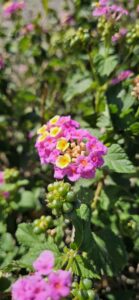
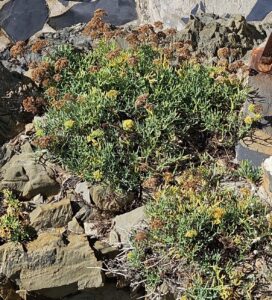

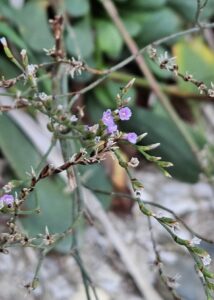
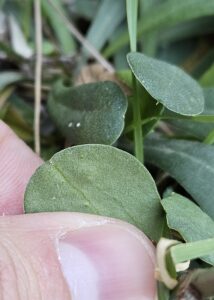
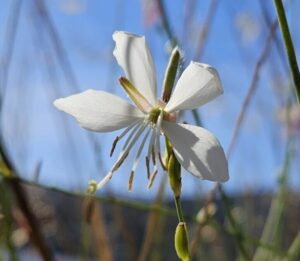 Flower of a white gaura (Oenothera lindheimeri)
Flower of a white gaura (Oenothera lindheimeri)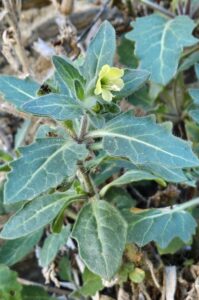
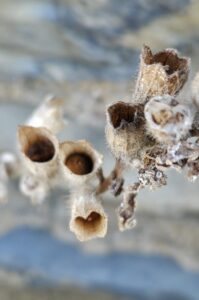

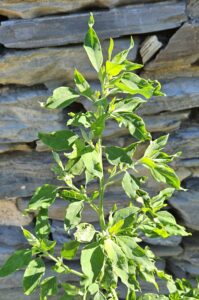
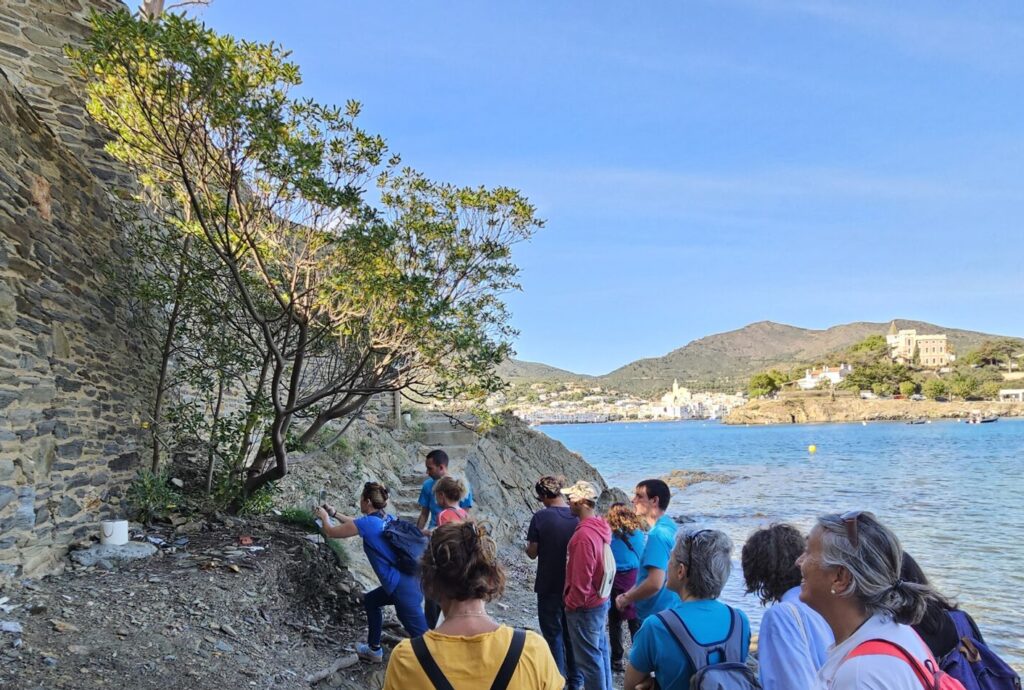 A participant making an iNaturalist observation of a Japanese cheesewood population (Pittosporum tobira) and, at the same time, everyone was collaborating to fill in the form of an observation of a transect you get when you submit it to the Volunteers’ Network of the LIFE medCLIFFS project.
A participant making an iNaturalist observation of a Japanese cheesewood population (Pittosporum tobira) and, at the same time, everyone was collaborating to fill in the form of an observation of a transect you get when you submit it to the Volunteers’ Network of the LIFE medCLIFFS project.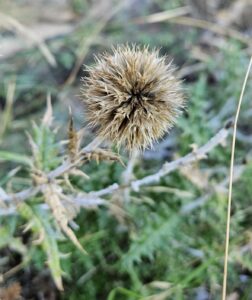
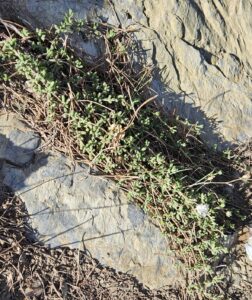
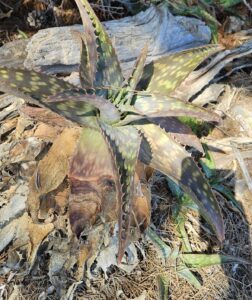
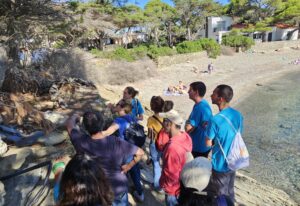

 Young tomato plant (Solanum lycopersicum) opening its way among the pine needles, occasional observation.
Young tomato plant (Solanum lycopersicum) opening its way among the pine needles, occasional observation.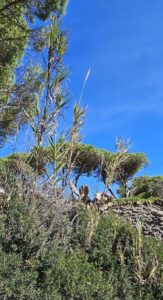
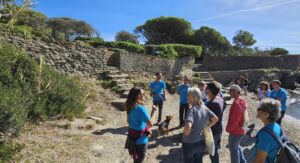
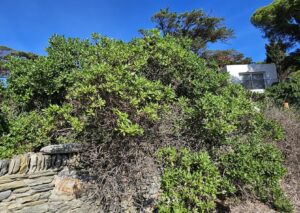
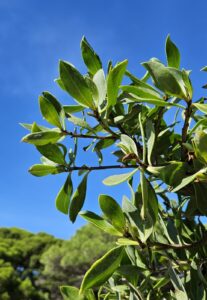
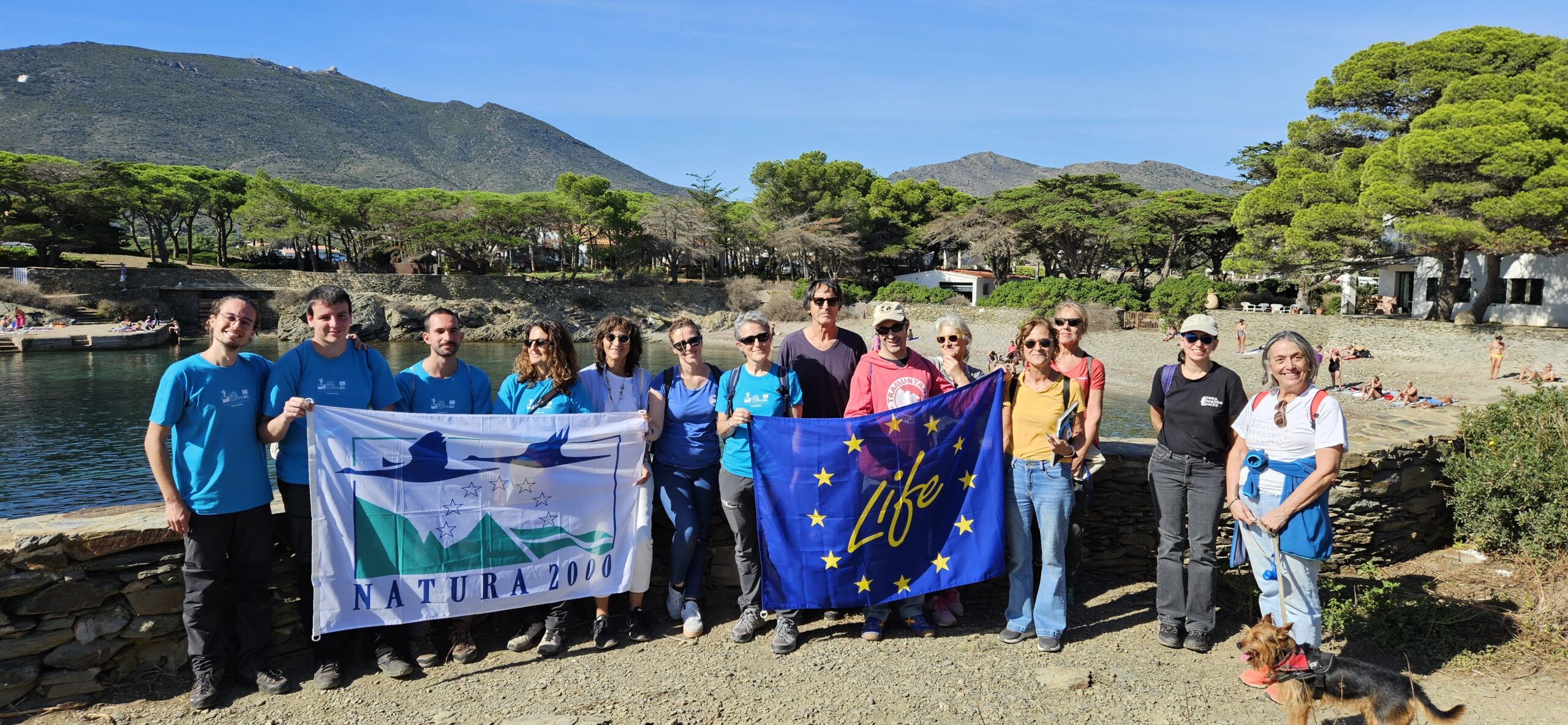 Group photo of the participants with the LIFE medCLIFFS staff and volunteers.
Group photo of the participants with the LIFE medCLIFFS staff and volunteers.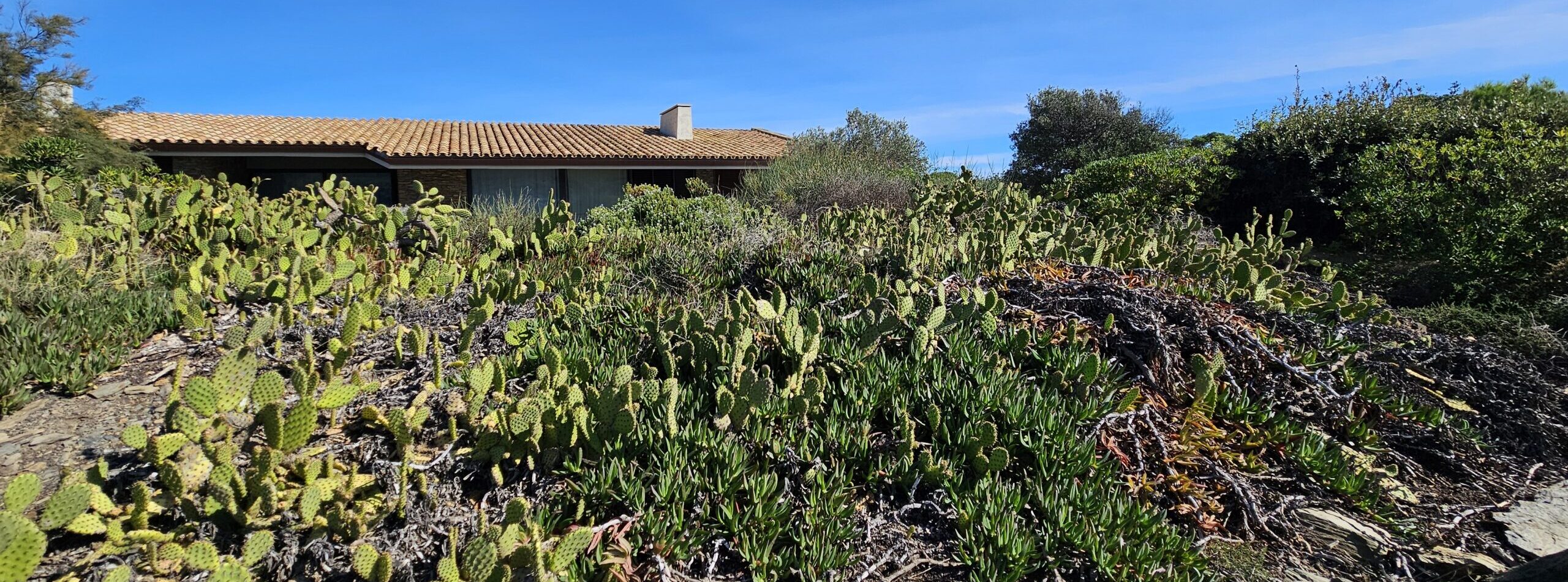 Mosaic of allochthonous plants escaped from the garden of a private property.
Mosaic of allochthonous plants escaped from the garden of a private property.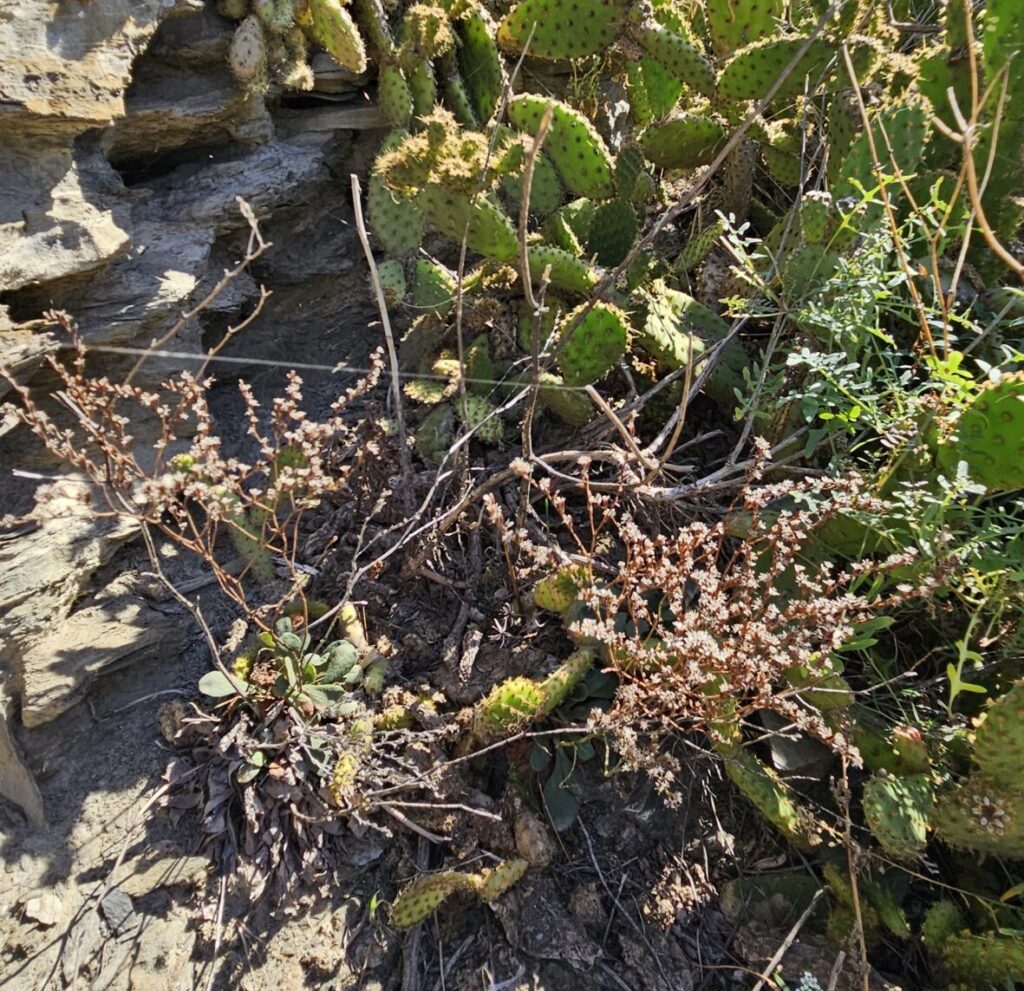
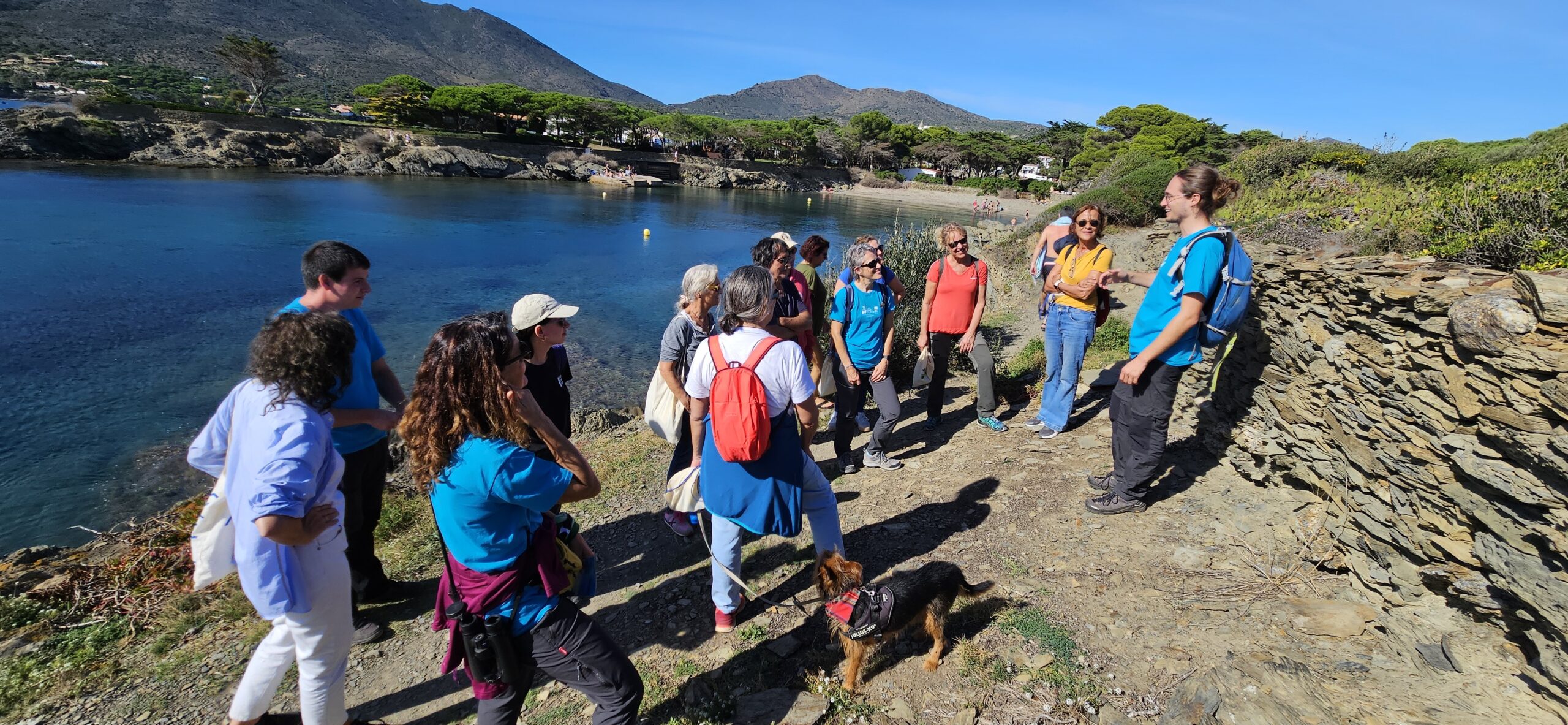 Lat stop of the field trip in front of the house with the mosaic garden of invasive plants.
Lat stop of the field trip in front of the house with the mosaic garden of invasive plants.